
ChươngChương 4.4.
SẢN XUẤT NÔNG NGHIỆP VÀ SẢN XUẤT NÔNG NGHIỆP VÀ
BIẾN ĐỔI KHÍ HẬUBIẾN ĐỔI KHÍ HẬU
Phạm Khắc Liệu
Bài giảng kiếm soát ô nhiễm môi trường nông nghiệp và nông thôn 4 1

Chương 4. SXNN và BĐKH
4.1. Phát thải khí nhà kính từsản
xuất nông nghiệp
4.2. Giảm thiểu phát thải khí nhà
kính
trong
sản
xuất
nông
nghiệp
Bài giảng kiếm soát ô nhiễm môi trường nông nghiệp và nông thôn 4-2
kính
trong
sản
xuất
nông
nghiệp
4.3. Các giải pháp nông nghiệp
thích ứng với BĐKH (tựhọc)

Chương 4. SXNN và BĐKH
4.1. Phát thải khí nhà kính tù sản xuất nông nghiệp
(1). Các khí nhà kính (GHGs) và nguồn phát thải:
• Agriculture releases to the atmosphere significant amounts of
CO2, CH4, and N2O.
• CO2is released largely from microbial decay or burning of
plant litter and soil organic matter.
• CH4is produced when organic materials decompose in
oxygen
-
deprived conditions, notably from fermentative
Bài giảng kiếm soát ô nhiễm môi trường nông nghiệp và nông thôn
oxygen
-
deprived conditions, notably from fermentative
digestion by ruminant livestock, from stored manures, and
from rice grown under flooded conditions.
• N2O is generated by the microbial transformation of nitrogen
in soils and manures, and is often enhanced where available
nitrogen (N) exceeds plant requirements, especially under wet
conditions.
• Some pesticides contribute to global warming.
4-3

Chương 4. SXNN và BĐKH
Bài giảng kiếm soát ô nhiễm môi trường nông nghiệp và nông thôn 4-4

Chương 4. SXNN và BĐKH
(2). Thực trạng và xu hướng phát thải GHGs từnông
nghiệp (IPCC, 2007)
• In 2005
– Agriculture accounts for an emission of 5.1 to 6.1 GtCO2-eq/yr (10-
12 % of total global anthropogenic emissions of GHGs).
– CH4contributes 3.3 GtCO2-eq/yr and N2O 2.8 GtCO2-eq/yr. Of
global anthropogenic emissions, agriculture accounts for about
Bài giảng kiếm soát ô nhiễm môi trường nông nghiệp và nông thôn
global anthropogenic emissions, agriculture accounts for about
60% of N2O and about 50% of CH4.
– N2O emissions from soils and CH4from enteric fermentation
constitute 38% and 32% of total non-CO2emissions from
agriculture, respectively. Biomass burning (12%), rice production
(11%), and manure management (7%) account for the rest.
• From 1990 to 2005
– Global agricultural CH4and N2O emissions increased by 17%, an
average annual emission increase of 58 MtCO2-eq/yr.
4-5



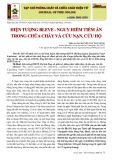

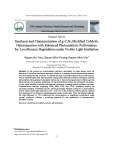
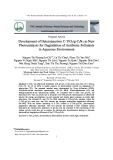
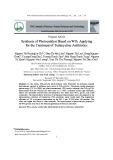






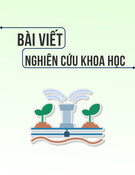










![Ô nhiễm không khí từ nông nghiệp: Thách thức toàn cầu và định hướng hành động [Mới nhất]](https://cdn.tailieu.vn/images/document/thumbnail/2025/20250917/kimphuong1001/135x160/52891758099584.jpg)
